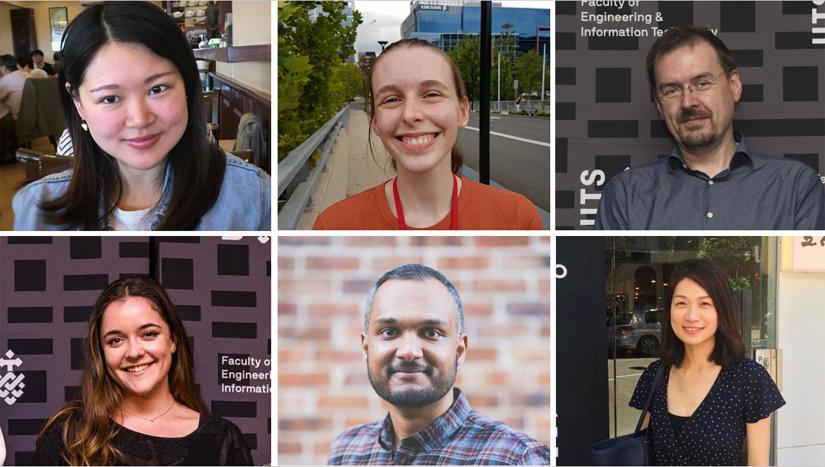Ericsson has seen great outcomes from collaborating with Master of Data Science and Innovation (MDSi) students for their iLab subjects. The students’ work has provided key insights that have positively contributed to Ericsson’s everyday business processes and customer deliverables.

Data Science students’ project leads to increased efficiency

Each Spring for their iLab subjects, TD School’s Master of Data Science and Innovation (MDSi) students bring their innovative thinking and data science knowledge to a large data project with an industry partner. For these semester-long engagements, students work in teams on projects sourced from a range of industry partners (corporates, government, NFPs and start-ups), to test their skills and broaden their experience tackling real-world business challenges.
In 2020, Ericsson came onboard and worked with three teams of MDSi students. The projects went so well, Ericsson immediately asked about participating in iLabs again in 2021. TD School got in touch with Mirko Ocokoljic, GM Enterprise Architecture & IT – Ericsson Australia (Managed Services), to find out more about their experience and the benefits of joining the iLab program.
Why did Ericsson decide to engage with the iLab subjects?
Ericsson decided to engage with the iLab subjects to tap into the skills and capabilities that the master’s students had to offer, with the advertised talents fitting perfectly to our needs. Ericsson has had a long running engagement with UTS and has sponsored Datathons, Studio and Capstone projects, and scholarship programs, which we have found to be beneficial.
What were the projects/areas you wanted to explore with the Master of Data Science and Innovation (MDSi) students?
We had three projects to explore with the master’s students, with a focus on Machine Learning and Artificial Intelligence.
The first project involved developing an image recognition tool to determine whether an installation job had been completed correctly or not, allowing the approval or rejection of these installs to be completely automated. Within this project, the students were also able to integrate an Optical Character Recognition software to read parts of the installation images.
The second project encompassed the creation of a Natural Language Processing tool to analyse trouble tickets and determine what resolution should be applied. Related to end user customers, these tickets included two free-text fields that would determine whether a technician was required on site, or whether a fix could be applied remotely.
The final project revolved around end user equipment forecasting. Students built a model to predict weekly volumes of product required for end users, which was closer to the actual value compared to previous forecasting methods used by Ericsson. The team investigated region level forecasting, which was previously performed only at a national level.
How did you collaborate with the MDSi students during the iLab projects?
Ericsson mentors met weekly with the students to answer questions and guide the project in alignment with our expectations and needs. This catchup provided necessary updates to our team, whilst assisting the students with any issues they had. At the end of the semester, teams that yielded significant insights were invited to present to senior managers and stakeholders. Following the conclusion of the project, the teams further assisted Ericsson with project deployment to ensure the models were working as intended, with some students even following up months later to see how everything was going.

Ericsson staff who collaborated with MDSi students during their iLab projects. Top left to right: Sharon Liu, Stephanie Stone, Mirko Ocokoljic. Bottom left to right: Adalita Young, Yasitha Hewakuruppu, June Seng Woo
What have the benefits of participating in the iLab subjects been for Ericsson?
Involvement in the iLab subjects allowed for the generation of projects that facilitated automation of business processes, which has led to increased efficiency and effectiveness within the respected areas. They allowed us to validate several concepts to determine the feasibility of progressing the ideas to an industrialisation stage.
The subject also introduced new approaches and ways of thinking we otherwise would not have considered from a varying, outside-in perspective.
Another key benefit was that the engagement increased Ericsson’s reach within the University. We received great interest from the students to continue collaborating and working with us and we are exploring the ability to onboard students into the organisation through our various Graduate and Scholarship programs.
Could you tell us a bit about the outcomes from the projects and how the students work has or will be used?
Out of the three projects undertaken by students, two have progressed to the industrialisation stage, with Ericsson teams working to integrate the work performed by students into our everyday business processes.
The image recognition project has allowed for the successful automation of a previously highly manual task, and the natural language processing project has received interest from offshore Ericsson stakeholders and is now a candidate for adoption globally.
The iLab engagements have enabled Ericsson to work more efficiently when delivering its services to customers.
The final project, based on end-user equipment forecasting, is currently under assessment due to the complexity of the problem. An Ericsson team will be performing a deep dive in the area where the student team’s findings will be used as a key component, to analyse where the datasets can be enriched, or the approach altered.
Overall, we have found the experience to be very beneficial and rewarding and are keen to continue this engagement in the future.
Interested in becoming an industry partner?
Discover more about iLabs by chatting with our team to find the right opportunity for your organisation.
